Hello dear readers,
with this article, I start a new category on my page: “Do it yourself (DIY)”. Every now and then I would like to introduce you to some useful home-made instructions that anyone can follow. I often have two left hands but everything I show you is really super easy and everyone can do it without any problems.
The first manual, most of you probably know from your kindergarten or school days, meanwhile it is very popular again: T-shirts printed with lavender oil, or short “lavender print”.
In general, lavender printing is not a printing process in the classical sense, here nothing is applied with rollers or a spray, but color pigments are dissolved from the carrier material and applied to the printing medium with the help of a solvent, in this case the natural oil from lavender. This process is very simple and also very suitable for handicrafts with children.
Translated with www.DeepL.com/Translator
What is needed?
- Motif print on 80g plain paper (mirror-inverted, laser print with best resolution)
- pure lavender oil
- white or light-coloured T-shirt or other textiles (fabric bags, pillowcases, etc.)
- large spoon
- brush
- flat irons
- baking paper
preparation
Before you really get started, you should prepare your desired motif for printing. This should be available in high resolution and above all mirror-inverted, so that it appears correctly on the textile. The printout should be done with a laser printer, if you don’t have one, you can also have the picture printed in the copy shop. Alternatively it should also work with an inkjet printer, but I couldn’t test that. It’s best to try it on a not so important textile before. Your print should be done with the highest possible print setting, in my case “fine” so that a lot of ink is applied to the paper and accordingly a lot is transferred to the textile.
workplace
Your workplace should be clean and empty. Please make sure you don’t have any grease or colour marks on your worktop, avoid coloured tablecloths or work completely on a wooden board. Lavender oil dissolves paint from all kinds of materials. If you want to print a T-shirt: Put a wooden board between them so that no oil or paint is transferred to the back.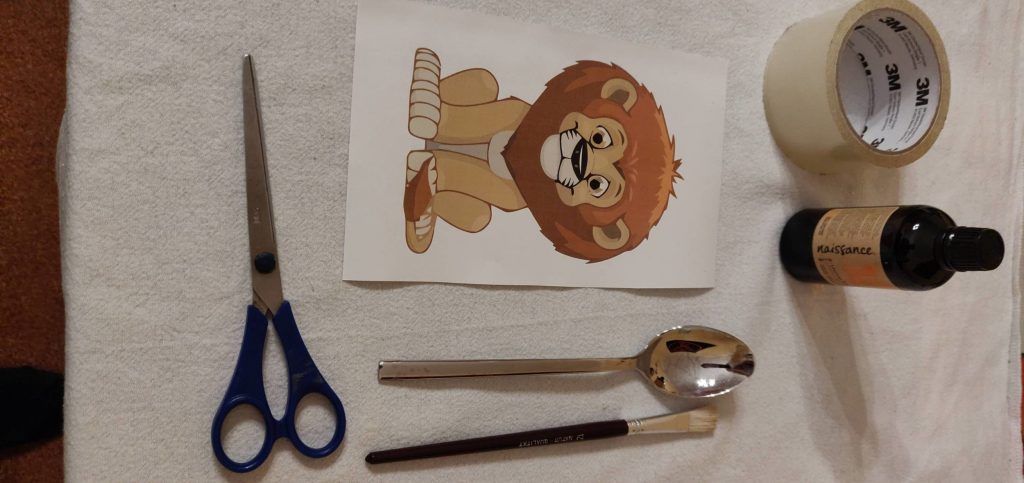
Here we go!
Put your printed paper with the printed side on the T-shirt and fix it with adhesive tape. It is important that your tape is not stuck in the motif space but only in the unprinted area. Before you transfer it: open the window, lavender oil smells good but sensitive people quickly get headaches.
Apply the lavender oil:
Trickle a few drops of the oil onto the paper where the motif is and spread it quickly with a brush. The paper becomes glassy and the motif shines through. The oil can be applied generously but it must not flow. The complete motive should now be visible.
Transfer of the motif to the textile
Now take your spoon and stroke in circular movements over the paper and the motif with light pressure. This transfers the colour pigments from the paper to the textile. By loosening an adhesive strip and lifting the sheet at a corner, you can observe the progress. Repeat the circular movements with the spoon until you are satisfied with the print result and dribble some oil every now and then. Remember: the picture on the textile will always be lighter and less coloured than on the sheet.
Fixation of the imprint
When you are happy with the result, carefully remove the sheet and the adhesive strips and place a sheet of unused baking paper on the T-shirt. Make sure you still have a wooden board between the t-shirt. Start your iron and turn off the steam, turning the temperature to maximum. When the iron is ready, you can use it to go over the baking paper and the motif underneath. The rest of the lavender oil disappears without a trace.
If the iron moves circularly over the baking paper without staying too long in one place, a few movements are sufficient. After the process, your textile is ready and washable (turned to the left, maximum 30°C).
Own designs created? Show your results in the comment area, I am very interested.
Questions and answers:
Is this also possible with dark textiles?
No, due to the low opacity and lack of color white, this does not work on dark textiles. Your print would be very difficult to see. A procedure to print black t-shirts with motifs will soon be available as a guide.
Why is the overprint so weak?
The motif will never have the same opacity on your T-shirt as on the sheet of paper. Not all colour pigments will dissolve and the pigments of the colour will not stick to every spot or corner through the mesh of the fabric.
Can I use the sheet with my motif more than once?
No, I can’t do that. The lavender oil dissolves so much ink from the paper that it cannot be used again for printing..
I made a mistake, can I clean the shirt again?
No, it’s not that easy. The paint adheres very well to the material and lasts even after several washes. A 100% removal is not possible.
My motive, has dots or other shapes on the textile?
Here, paint seems to have been detached from the substrate, possibly a tablecloth, by contact with the lavender oil. This cannot be removed, therefore everything that could affect the print must be removed from the working area beforehand.

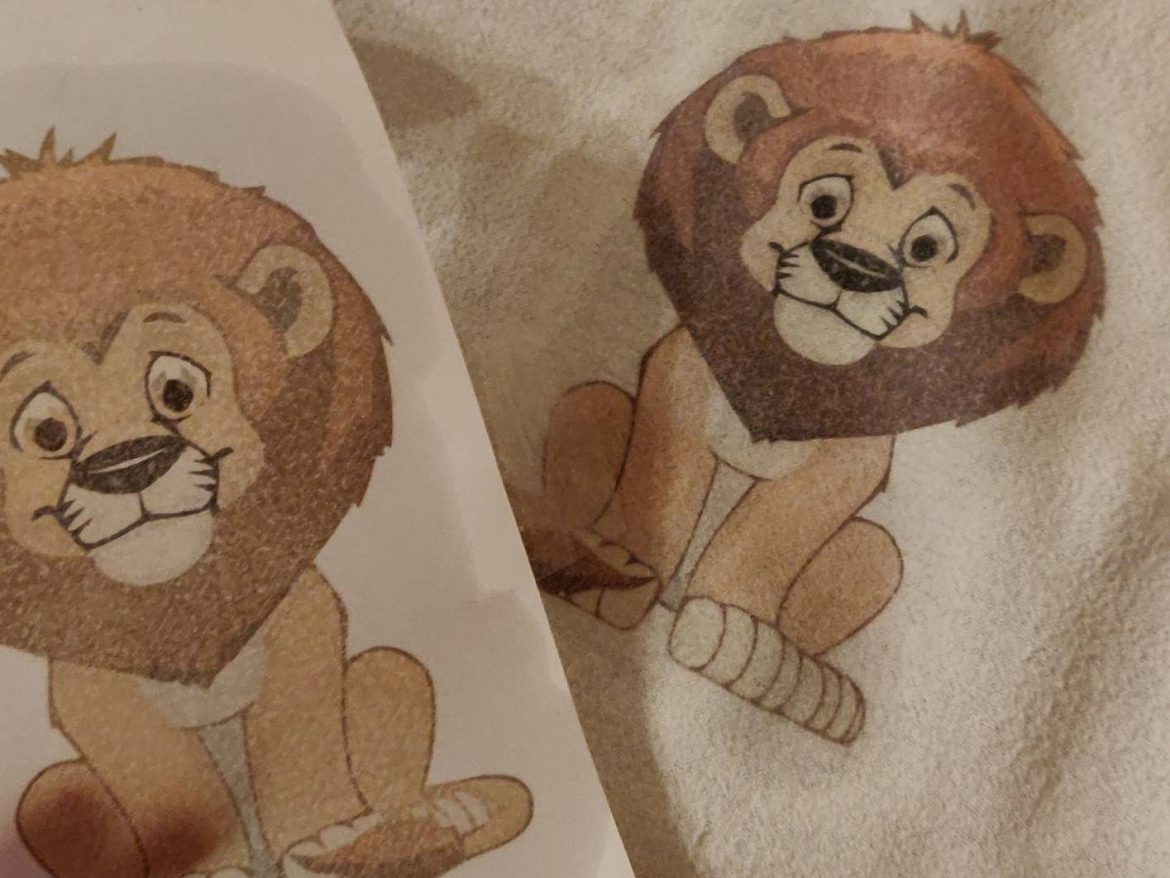
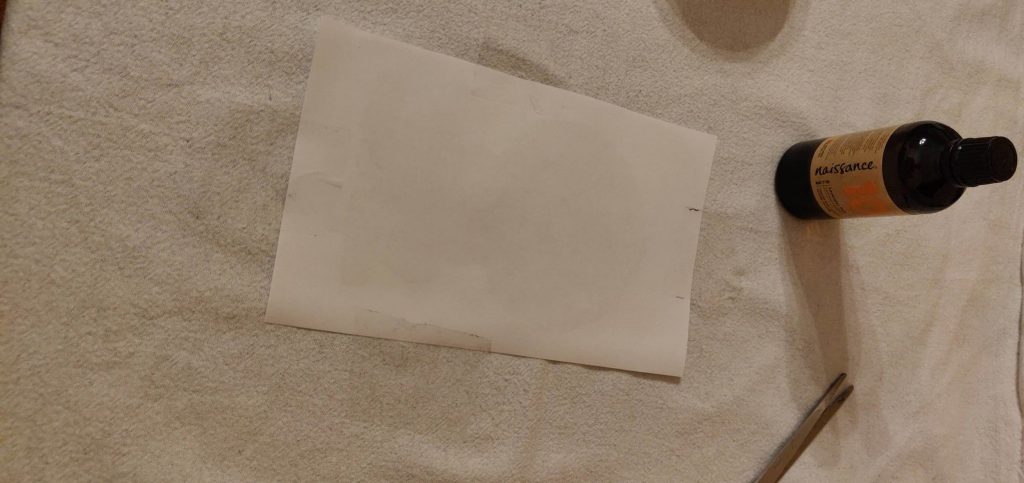
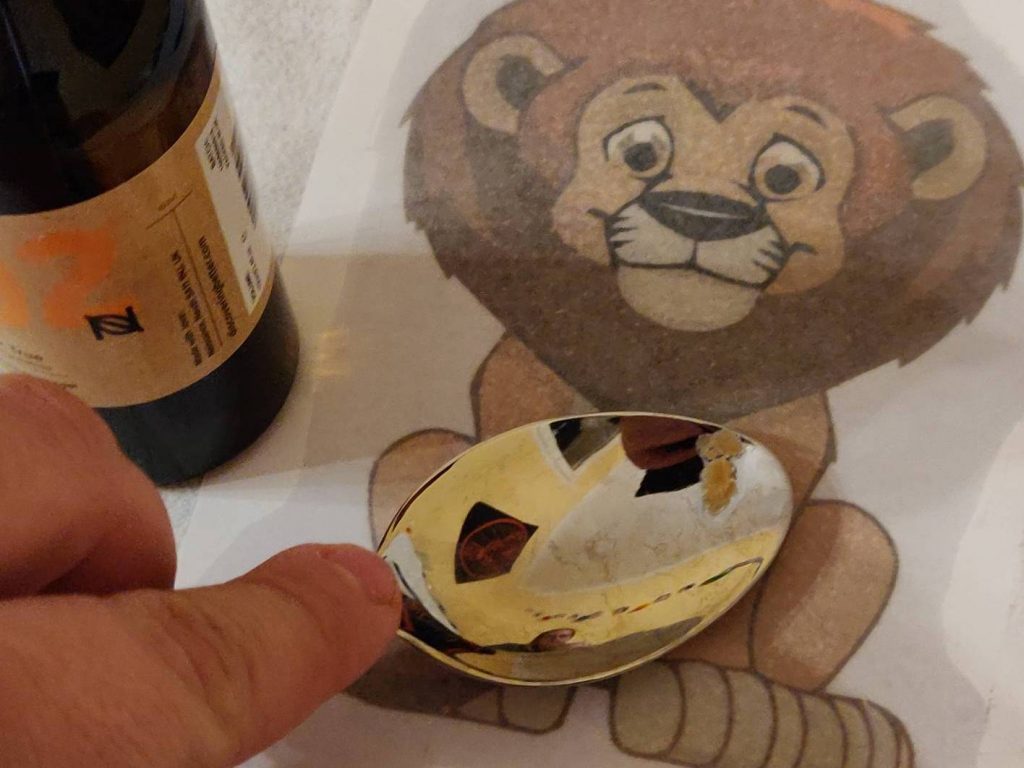
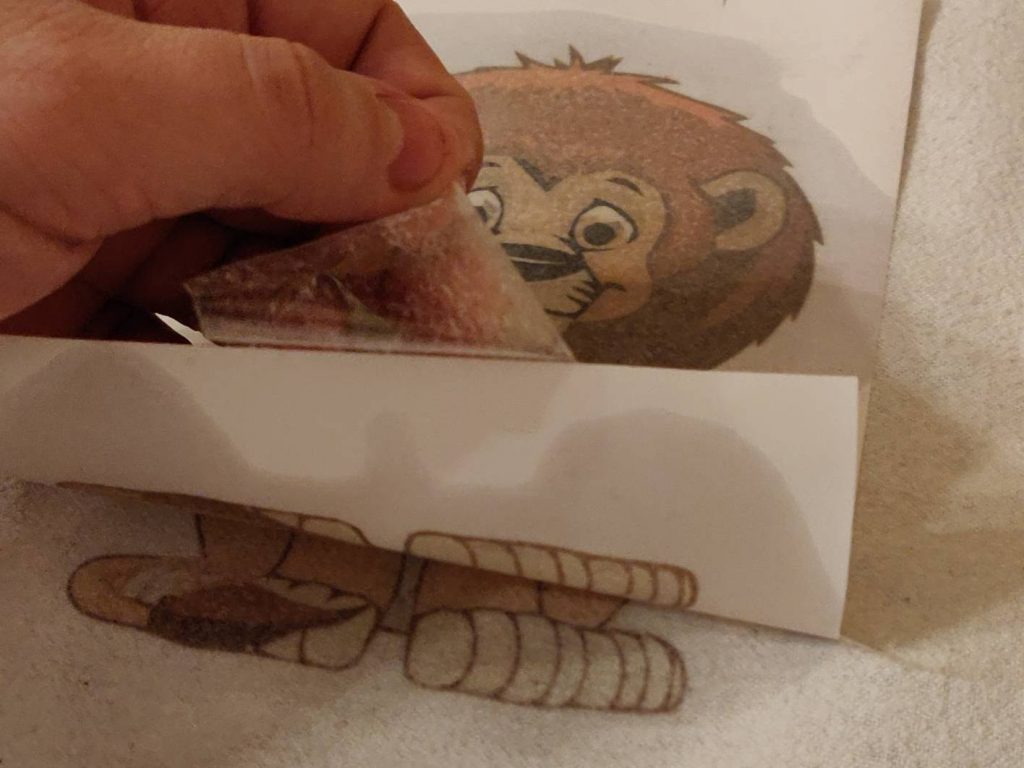
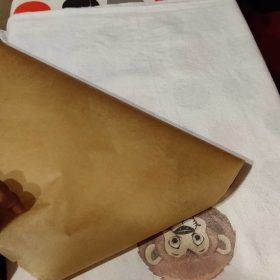
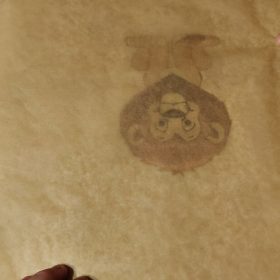
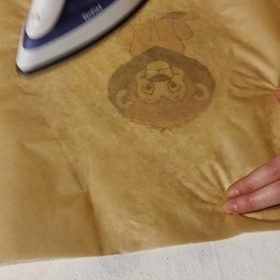
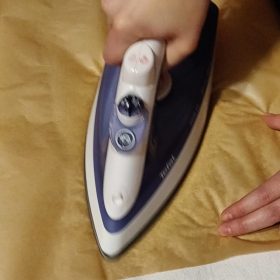

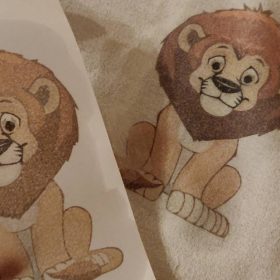
1 Kommentar
Is the LAVANDIN oil suitable too (https://de.wikipedia.org/wiki/Lavandin)? This is what is mostly being sold as “lavendel” in drug stores here in Germany (and elsewhere sorely too), it’s a hybrid with a more pleasant smell then the real lavender, which is why it’s easier to find in shops. It’s not that easy (nor cheap) to buy real lavender oil. Does anybody know if this would work…??
Also, how much oil have you used for the lion picture? I have a bit of lavender oil but am worried it won’t be enough and I don’t know any offline source of cheap lavender oil.
Kommentare sind geschlossen.